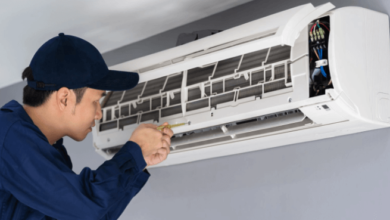The Ultimate Guide to Building the Perfect Fish Cleaning Station

Whether you’re a seasoned angler or a casual fishing enthusiast, having the perfect fish cleaning station can make all the difference in your post-fishing routine. Not only does it provide a clean and organized space to gut and prepare your catch, but it also ensures that you’re doing so safely and efficiently. In this ultimate guide, we’ll explore everything you need to know about building the ideal fish cleaning – from selecting the right location and materials, to stocking up on essential tools and maintaining its pristine condition. So sit back, grab your tackle box, and get ready to dive into this comprehensive guide!
Location
When it comes to building the perfect fish cleaning station, choosing the right location is key. The ideal spot should be easily accessible and close to a water source for easy clean-up. Consider placing your station near a dock or boat launch if you’ll be fishing on the water, or in your backyard if you’re working with land-based catches.
Another important factor to consider when selecting a location is privacy. You don’t want to attract unwanted attention from neighbors or passersby while gutting and cleaning your catch. Look for an area that’s shielded from view by trees, bushes, or other natural barriers.
It’s also essential that your chosen location has adequate space for both yourself and any fellow anglers who may join you in using the station. Make sure there’s enough room for everyone to work comfortably without bumping elbows.
Think about convenience – choose a spot that’s within easy reach of power outlets (if necessary) and storage areas where you can keep all of your tools and supplies organized. With these considerations in mind, you’ll be well on your way to creating the ultimate fish cleaning setup!
Materials
When it comes to building the perfect fish cleaning, choosing the right materials is essential. You’ll want to make sure that your station is durable, easy to clean and can withstand exposure to water and other elements
One of the most popular choices for building a fish station is stainless steel. This material is not only strong but also rust-resistant, which makes it ideal for use in outdoor settings where exposure to moisture is high. Stainless steel also has a sleek appearance that looks great in any backyard or dock setting.
Another option for those on a budget or looking for a more rustic feel could be wood. While wood may require more maintenance than stainless steel, such as sealing and staining, it can add warmth and character to your space. Just make sure you choose rot-resistant woods like cedar or redwood if you plan on using them in an outdoor environment.
If you’re looking for something even more low-maintenance, plastic is also an option worth considering. Plastic stations are lightweight and easy to clean with just soap and water. However, they may not have the same aesthetic appeal as stainless steel or wood options.
Selecting the right materials will depend on your personal preferences and requirements for durability and ease of maintenance when building your own fish cleaning station!
Tools
When it comes to building the perfect fish station, having the right tools is crucial. First and foremost, you’ll need a sturdy work surface that can withstand water and fish guts alike. A large cutting board or stainless steel table will do the trick.
Next up are knives – sharp ones. Invest in a quality fillet knife with a flexible blade for easy maneuvering around bones and skin. A serrated knife also comes in handy for scaling fish or cutting through thicker parts like heads or tails.
You’ll also want some pliers to help remove hooks from stubborn mouths, as well as scissors or shears for trimming fins and other tough areas.
Don’t forget about gloves! Protect your hands from cuts, scrapes, and bacteria by wearing disposable gloves while handling raw fish.
Keep all of your tools organized and easily accessible with a tool caddy or magnetic strip attached to your work surface. With these essential items at your fingertips, you’ll be well on your way to creating the ultimate fish station.
The Process
Now that we have chosen the perfect location and gathered all necessary materials and tools, it’s time to get started on building the ultimate fish station. The process may seem daunting at first, but with a step-by-step plan in place, it will be smooth sailing.
We need to prepare our work surface by installing a sink and laying down a non-slip mat. It’s important to ensure that the area is well-ventilated as well.
Next up is assembling the cutting board onto our workstation. Ensure that it’s securely fastened before moving on to attaching hooks or shelves for storing your equipment.
Maintenance
After building your perfect fish station, it’s crucial to ensure that it remains in top condition for future use. Proper maintenance is key to keeping the station functioning efficiently and prolonging its lifespan.
One important aspect of maintenance is regularly cleaning the surfaces and tools used during the cleaning process. This includes wiping down counters with a disinfectant spray and washing cutting boards with soap and hot water after each use.
It’s also essential to keep an eye on any wear or tear on equipment such as knives or fillet gloves. Replacing these items when necessary will prevent them from becoming dull or unsafe to use.
Conclusion
After reading this ultimate guide, you are now equipped with the knowledge and tools to build your own perfect fish cleaning station. Remember that choosing the right location for your station is crucial, as well as using materials and tools that will withstand harsh conditions.
Follow the step-by-step process we provided, from designing and building to adding some finishing touches. And don’t forget about maintenance! Keeping your fish cleaning station clean and functional is essential for its longevity.
A good fish station can make all the difference in enjoying a successful fishing trip. With a little effort and investment upfront, you’ll be able to streamline your cleaning process, keep everything organized, and make sure you’re always ready for next time.




